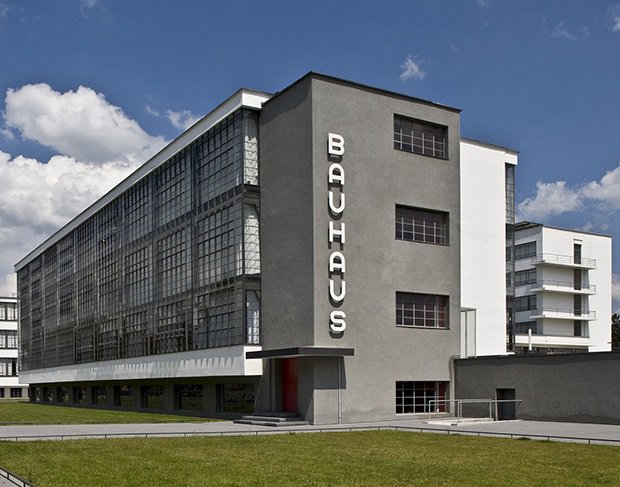
Eat and drink the Bauhaus way
There is nothing quite like finding the “authentic”. That can be visiting places where important things happened and walking in the footsteps of men and women, who changed history. These experiences are special and, for fans of design and architecture, they are easy to find in BauhausLand in 2019. In the German federal states of Thuringia and Saxony-Anhalt, you can explore the cities, where the Bauhaus movement began a century ago. You can walk the lanes, see the buildings – and even eat and drink “the Bauhaus way.” Have a meal in a Bauhaus-designed restaurant; drink a beer on a terrace designed by a Bauhaus architect; bake Bauhaus bread!
50 days to go: The Bauhaus centenary celebrations.
2019 is just around the corner. In 50 days’ time, the “100 Years of Bauhaus” opening festival launches the centenary of the foundation of the Bauhaus (16th – 24th January, 2019; www.bauhausfestival.de/en/). There will be celebrations around the world, especially in BauhausLand. Here, in the twin hotspots of Weimar and Dessau, 2019 is an excuse for one-of-a-kind events, imaginative exhibitions and fun festivals.
And, for anyone planning a special trip in 2019, we have the answers to two of the most popular questions: Where can we eat and where can we drink the Bauhaus way?
Weimar: Start where the Bauhaus started.
The cradle of modernism is just south of Berlin. At what is now the Bauhaus University, the social hub is the Bauhaus Atelier, the café-shop, where you can join students, sip espressos, munch cookies and chat about design. Check out innovative products designed and created by students and faculty. (This is also where Bauhaus walking tours begin). For an authentic hands on experience in Weimar, sign up for a 3-hour Bauhaus baking course at Rosines Backwerkstatt. Bake a healthy organic loaf – perfect with cheese and a glass of red wine! And check out wine shops for the local Saale-Unstrut red wine that is being released in 2019 to celebrate the Bauhaus Centenary.
Dessau: Home of the iconic Bauhaus building.
In Dessau, the Bauhaus Club, the café-bistro at the Bauhaus, is justifiably popular. Serving good coffee, hearty breakfasts and healthy snacks, this has a relaxed student vibe. And they sell Bauhaus designs, such as the stylish egg coddler, created by Wilhelm Wagenfeld in 1933 to simplify boiling eggs. The perfect souvenir! Also in Dessau is the Mensa im Bauhaus. This lovingly-restored restaurant has a bold Hinnerk Scheper colour scheme, plus five long communal tables and stools designed by Marcel Breuer. This, too, is open to the public, so you can eat where Bauhaus professors ate in the 1920s. Back then, the menu featured bread and buttermilk; today’s dishes are more elaborate: chicken salad, schnitzel and roast pork with red wine sauce.
Dessau: More Bauhaus Foodie Heritage.
Mies van der Rohe designed just one building in Dessau, the Kiosk at the Masters’ Houses. Destroyed during the East German DDR regime, it has been rebuilt and now serves fresh juices, homemade lemonade, coffee and snacks at weekends. And, just behind the Kiosk is the perfect spot to relax – the garden of the Gropius House. A mile or so away, on the banks of the River Elbe, is the Bauhaus-designed Kornhaus Restaurant. Dating from 1930, it has a semi-circular glass dining room and a broad terrace overlooking the water. Here, the chef conjures up modern, Mediterranean-influenced dishes: salad of smoked trout or grilled goat’s cheese; duck with orange sauce or grilled wild boar. Desserts are delicious: dumplings with hot blueberries or apple strudel. Afterwards, watch the sun set with a glass of locally-grown Silvaner white wine or a hearty red from the Seeliger family.
Jena: The Insider’s Tip
The Bauhaus was as much about design as architecture. And one of the major influences on the movement was the Belgian, Henry van de Velde. His wide-ranging creativity included designs for the Burgau Porcelain Factory and in nearby Jena, the City Museum pays tribute to him in a delightful way. In the Philisterium Café, specially-created cakes, chocolates and coffee are served on porcelain decorated with his distinctive designs.
